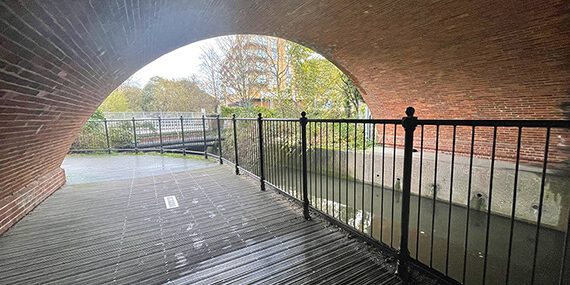For many Dartford is synonymous with the Dartford Crossing, a marvel of design and engineering spanning the River Thames. For others it is a commuter town, its proximity to central London making it an ideal location in which to live. However, what many do not know is that Dartford’s history is as rich as that of its Kent neighbours, such as Maidstone, Sevenoaks, Tonbridge or Royal Tunbridge Wells. Unfortunately, not as much of that history survives in today’s architecture in Dartford. Nevertheless, what does tells the story of Dartford’s growth which we explore in this article.
19th-century housing revolution
Dartford was a Victorian market town before its transformation. During those years, there survived some examples of its Tudor and Georgian past. Some medieval buildings are still standing. The Holy Trinity Church, for example, was used as a stop for pilgrims on the way to Canterbury. Others, including the Royal Bull and Victoria Hotel and the medieval buildings along Bullace Lane and at the bottom of East Hill, offer fleeting glimpses into the past.
In the late 19th-century a housing revolution began to take shape in Dartford, shaking up the architectural fabric of the town. Housing estates appeared such as the Swaisland, Downs, Fulwich and Priory Park estates, to name a few.
How the architecture in Dartford changed
This housing revolution, spurred by the need for new homes for workers, saw the rise of terraced housing in the area. It began with New Town in the late 19th-century which saw terracing become a popular architectural design which was quickly replicated in other estates.
As well as all the housing estates, the number of individual homes grew as well. The turn of the century saw more Edwardian styles appear in the larger houses. The emphasis was on light and fresh air, and French doors became popular, offering direct access to gardens. Villa houses in a Queen Anne style were simple and elegant, a move away from the previous Victorian styles. Smaller homes included more decorative brickwork, glazing and coloured glass. Before the First World War, the Arts and Crafts Movement with its simpler design and locally sourced materials was popular too.
Growth and expansion in the 20th-century brought new roads, houses, and ultimately shopping malls. This was at the expense of the medieval, Tudor and even Georgian architectural styles that stood in this area until then. Glass and steel replaced Victorian shop fronts. What was not lost through modernisation, was destroyed by fire or war-time bombings.
The architecture in Dartford after the First and Second World Wars
When the First World War ended, there was a desire for a return to some form of greater aesthetic design. Fancier brickwork appeared, along with lattice windows and mock beams. Pebbledash also became popular as it was an affordable and durable material.
In the 1920s, bungalows and chalet-style homes sprang up. The steeply pitched rooflines of chalet bungalows offered a more interesting street view and were affordable. Around the mid-1930s, flats and maisonettes grew in popularity. By the mid-1940s, the need for housing grew exponentially and new housing estates began to appear. Temple Hill Estate, on the outskirts of Dartford, is the first example of a self-sufficient, successful mini town.
As life became more settled after the Second World War, demand for housing continued to grow. The 1950s saw more terraced and semi-detached homes built, only now they were 2 or even 3 storeys high. A plain exterior was livened up with larger windows, and both gardens and garages were included – a sign of increasing prosperity. The 1960s brought more town houses, as families grew, and people looked for more space.
Today, new apartment blocks are springing up around the town’s outskirts as demand for housing continues unabated. More modern designs include balconies and winter gardens although materials and colours are chosen to fit within their surroundings.
Did you know?
Sir Mick Jagger and Keith Richards, of Rolling Stones fame, were born and grew up in Dartford. A blue plaque at Dartford railway station marks the town’s part in history.
Making changes to your home
Whatever the architectural style of your home, chances are you can grow and expand it if you need more space. Conversions and extensions can fit any design and blend into your home’s aesthetic. Even if you live in a conservation area or your home is a listed building, there are ways to get more space if you need it.
Talk to us about your home’s design
At Wilson Architectural Buildings Design we have the knowledge and expertise to help. You can start by taking a look at some of our previous work, or get in touch with us for an initial chat.
Sources:
Dartford Archive: https://www.dartfordarchive.org.uk/
Great British Life: https://www.greatbritishlife.co.uk/people/mick-jagger-on-his-love-of-dartford-7284366
Ask us anything about architecture and building consultancy.
We’re ready to advise.






